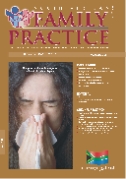Knowledge and Experiences of Needle Prick Injuries (NPI) among Nursing Students at a University in Gauteng, South Africa
Keywords:
Knowledge, Experience, Needle prick injuries, Nursing students, University
Abstract
Background: Healthcare workers and students on training who are directly involved in treating and nursing patients face a great risk of acquiring blood-borne infections from the workplace. Needle prick injuries (NPI) are the commonest route by which such infections are transmitted from patients to healthcare providers. Nursing students on training are no exception, as they get exposed to accidental needle pricks and contamination during their hospital activities. Lack of appropriate resources, knowledge and skills, coupled with the unavailability of the universal standard precautionary procedures and compliance thereof, constitute high risks for needle prick injuries. Adequate knowledge and adherence to safety practices could prevent the occurrence of NPI and the related consequences. A survey was conducted among nursing students at a specific university in Gauteng to assess their knowledge of NPI, to identify and describe factors that contribute to the occurrence of NPI, and to discover the circumstances of needle prick accidents among the targeted group of students. Methods: A cross-sectional quantitative survey was conducted among nursing students from the second to the fourth year of study registered at the specific university for the 2007 academic year. Questionnaires were hand delivered to a convenient sample of nursing students attending mandatory nursing classes. Those who consented signed a consent form. Participants completed and handed back the questionnaires to the researchers on the same day that they were delivered. Data collected included factors contributing to NPI and high-risk procedures leading to NPI, as perceived by these students. A knowledge assessment of NPI guidelines, policies and protocols and prevalence of NPI among these students was also done. Results: A response rate of 96 (74%) was achieved. The average age of the respondents was 23 years, with a minimum age of 18 and a maximum age of 35. The sample consisted of more females than males. The majority of respondents were in the second year of study. The majority (56%) rated needle recapping, disposing used needles (28.1%) and cleaning sharp instruments (56.3%) as extremely high-risk procedures. Furthermore, 30.2% of the respondents thought suturing and blood taking (33.3%) were high-risk procedures for NPI, while 25% rated administering injections, 35.5% rated blood transfusion and 74.8% rated the lack of adequate containers for sharps disposal to be highly associated with the risk of NPI. A significant proportion of the respondents rated the lack of knowledge about NPI (policies and protocols) at institutions of clinical training as an extremely high risk, followed by the lack of accompaniment and in-service training. Only 16.0% of the respondents had suffered NPI and only 8.3% had reported the incident. Conclusion: Procedures rated as high risk were considered to be most likely associated with the occurrence of NPI. Appropriate guidelines, adequate knowledge and the enforcement of compliance with standard precautionary measures could reduce the incidence of NPI among nursing students.
Published
2008-07-04
Section
Original Research
By submitting manuscripts to SAFP, authors of original articles are assigning copyright to the South African Academy of Family Physicians. Copyright of review articles are assigned to the Publisher, Medpharm Publications (Pty) Ltd, unless otherwise specified. Authors may use their own work after publication without written permission, provided they acknowledge the original source. Individuals and academic institutions may freely copy and distribute articles published in SAFP for educational and research purposes without obtaining permission.

